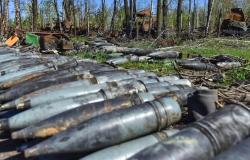The editorial team advises you
The elected officials of the municipality have asked some questions: What will be the landscape impact? What are the benefits for the region? Is this project ecological? What quantities of water taken from the Vienne? Where does the energy needed to run the factories come from? Why here?
Victor Levy Frebault, development director of major projects at Verso Energy responded. If there is no question here of launching a scientific debate while the Lichen project (Limousin hydrogen fuel and new energy) is at the stage of the feasibility study, the elements put forward by this executive of the French group shed light on the reasons for choosing Saillat-sur-Vienne and Étagnac to establish “a large-scale industrial site”.
1. Why this project?
“The aviation sector must decarbonize, it is a legal obligation. Synthetic fuels are favored today,” explained Victor Levy Frebault. The choice of the Saillat factory is practical: it emits 700,000 tonnes of CO2 each year. “Our project would allow total decarbonization”, underlined the major projects director who listed other advantages: “Electric capacities are significant here via the RTE network (Editor’s note, manager of the electric transport network). And then there is the water from the Vienne and the land for our industrial bricks (the factories). »
2. Needs
The project “needs” 35 hectares for three factories (hydrogen production, CO2 and hydrogen “combination” and synthetic fuel manufacturing) in addition to the unit which will capture the CO2 in Saillat. “The most favorable land is in Étagnac. We negotiated and worked with Safer (Land Development and Rural Establishment Company) for compensatory land. We buy land at industry prices,” explained Victor Levy Frebault. Or two to three times the price of agricultural land. Water requirements are estimated at 300 m³/h, with Verso Energy studying the possibility of using water discharged by the Sylvamo paper factory in Saillat. Finally, the electricity needs are “very significant”: 800 Megawatts per year: “It will only be renewable energy, mainly from solar energy. We have our own production capacities but we also hope for local projects to support our needs. »
3. The fallout
Verso Energy, which estimates the investment at more than a billion euros, announces the creation of 300 jobs (120 direct and 180 indirect): “There will obviously be induced jobs. » The three years of work would mobilize 1,000 people. The benefits in terms of local taxation would be between €200,000 and €1 million per year for a production of 190,000 tonnes of synthetic fuel each year.
4. Project impacts
To the question “What could be the fears of environmental defenders?” », Victor Levy Frebault replied: “We are an installation classified for environmental protection (ICPE). We are subject to impact and danger studies. Noise is estimated at the property line at 60 decibels. Environmentally, it would be difficult to fault a decarbonization project. But we will not carry out the project against the population.” Concerning the transport of “sustainable aviation fuel”, SAF in English (sustainable aviation fuel) mainly to airports, Verso is putting forward several options: the train, electric or hydrogen trucks. Verso announces that its project would avoid the emission of 5.5 million tonnes of CO2 over ten years and create 5,040,000 tonnes of oxygen.
5. Brakes
The timetable is constrained according to the industrial group which explains that its customers are “waiting” for fuel for 2030. If the technical and environmental studies are conclusive, Verso Energy will submit a request for environmental authorization and building permits alongside requests for subsidies. (Europe, Region, Ademe, etc.). “We need your support,” insisted Victor Levy Frebault. Benoît Savy, president of Charente Limousin who is working on this issue with his colleagues from Haute-Vienne, clarified that the territorial coherence plan (SCoT) currently being developed would not be a “brake.” »
6. Hydrogen really green?
Verso Energy uses both the term “renewable, low-carbon hydrogen” and “green hydrogen”. According to the industrial group, the production of hydrogen, which requires a lot of energy, would be done from renewable energy, mainly produced by photovoltaics. According to a professor from the National School of Mechanics and Aerotechnics of Poitiers who requires anonymity, “to avoid any conflict of interest”, green hydrogen is “produced by electrolysis of water from carbon-free or renewable electricity. It offers sustainable energy benefits because its production and use do not emit CO2. However, it is necessary to master the industrial process well. » Verso Energy also mentions the “biogenic” CO2 produced by the Saillat factory: “This CO2 comes from wood biomass, it has no impact on the environment. »






